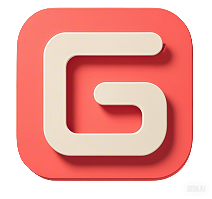Direct-to-film (DTF) printing has revolutionized the custom apparel and textile industry, offering unparalleled versatility, vibrant designs, and cost-effective solutions for businesses of all sizes. Whether you’re a small business owner, a print shop operator, or an entrepreneur looking to scale your custom printing operations, investing in the best commercial DTF printer can be a game-changer. This ultimate guide will walk you through everything you need to know about DTF printing, from its benefits and applications to how to choose the best commercial DTF printer for your needs.
What is DTF printing?
DTF printing is a cutting-edge technology that allows you to print designs directly onto a special film, which is then transferred onto fabric using heat and pressure. Unlike traditional methods like screen printing or Direct-to-Garment (DTG) printing, DTF printing works on a wide range of materials, including cotton, polyester, blends, and even non-textile surfaces like leather. This versatility makes it an attractive option for businesses looking to expand their product offerings.
How Does DTF Printing Work?
The DTF printing process involves the following steps:
- Design Creation: Create your design using graphic design software.
- Printing: Print the design onto a special PET film using a DTF printer and DTF inks.
- Powder Application: Apply a hot-melt adhesive powder to the printed film.
- Curing: Cure the powder-coated film using a heat press or curing oven.
- Transfer: Transfer the design onto the fabric using a heat press.
This process is straightforward, efficient, and produces high-quality results, making it ideal for commercial applications.
Why Choose a Commercial DTF Printer?
For businesses, investing in a commercial-grade DTF printer offers several advantages:
- Cost-effectiveness: DTF printing eliminates the need for expensive screens or plates, reducing setup costs.
- Versatility: Print on a wide range of materials and products, from t-shirts and hoodies to bags and caps.
- Scalability: Handle large production volumes with ease, making it suitable for growing businesses.
- Durability: DTF prints are long-lasting, with excellent wash resistance and vibrant colors.
- Ease of Use: Modern DTF printers are user-friendly, with intuitive software and minimal maintenance requirements.
These benefits make DTF printing a smart choice for businesses looking to stay competitive in the custom printing market.
Key Features to Look for in the Best Commercial DTF Printer
When choosing a commercial DTF printer, it’s essential to consider the following features:
1. Print Quality
High-resolution printing is crucial for producing detailed and vibrant designs. Look for printers with a resolution of at least 1440 dpi to ensure professional-grade results.
2. Speed and Efficiency
For commercial applications, speed is critical. Choose a printer that can handle high production volumes without compromising quality. Some top models can print up to 20 square meters per hour.
3. Compatibility
Ensure the printer is compatible with a wide range of materials and supports various ink types, including white ink for dark fabrics.
4. Durability and Maintenance
Invest in a printer built to withstand heavy use. Features like self-cleaning printheads and automated maintenance systems can save time and reduce downtime.
5. Software Integration
Look for printers with user-friendly software that supports popular design formats and offers advanced features like color management and print previews.
6. Cost
While initial costs are important, consider the long-term expenses, including ink, film, and maintenance. A cost-effective printer should balance upfront investment with operational efficiency.
Top Commercial DTF Printers in 2024
Here are some of the best commercial DTF printers currently available, based on performance, reliability, and user reviews:
1. Epson SureColor F2100
The Epson SureColor F2100 is a versatile and reliable option for businesses. It offers high-resolution printing, fast production speeds, and excellent color accuracy. Its user-friendly interface and robust build make it a popular choice among professionals.
2. L1800 DTF Printer
The L1800 is a budget-friendly option that delivers impressive results. It’s ideal for small to medium-sized businesses looking for an affordable yet efficient solution. The printer supports white ink and works well with various materials.
3. Audley A3 DTF Printer
The Audley A3 is a compact yet powerful printer designed for commercial use. It features advanced printhead technology, high-speed printing, and compatibility with a wide range of fabrics. Its low maintenance requirements make it a hassle-free option.
4. PUNEHOD DTF Printer
The PUNEHOD DTF Printer is known for its durability and ease of use. It offers excellent print quality, fast curing times, and a robust design that can handle heavy workloads. It’s a great choice for businesses with high production demands.
Real-World Applications of DTF Printing
DTF printing is widely used in various industries, including:
- Custom Apparel: Create personalized t-shirts, hoodies, and jackets with intricate designs.
- Promotional Products: Print logos and branding on bags, caps, and other merchandise.
- Sportswear: Produce durable and vibrant designs for team uniforms and activewear.
- Home Décor: Customize cushions, curtains, and other textile products.
These applications demonstrate the versatility and profitability of DTF printing for businesses in diverse markets.
Case Study: A Small Business Success Story
Consider the example of a small custom apparel business that invested in a commercial DTF printer. By offering high-quality, customizable products, the business quickly distinguished itself from competitors and tapped into new markets. Within just six months, they saw a 40% increase in revenue, thanks to their ability to deliver vibrant, durable designs that resonated with customers.
The scalability of DTF printing played a crucial role in this growth. The business could effortlessly transition from small, personalized orders to large bulk orders without compromising on quality or turnaround time. Additionally, the low production costs associated with DTF technology significantly improved their profit margins, allowing for competitive pricing and promotional offers that attracted even more clientele.
This case study highlights the transformative potential of DTF technology. For small businesses, it offers an accessible way to expand product offerings, streamline operations, and boost profitability—all while maintaining the flexibility to adapt to evolving customer demands.
